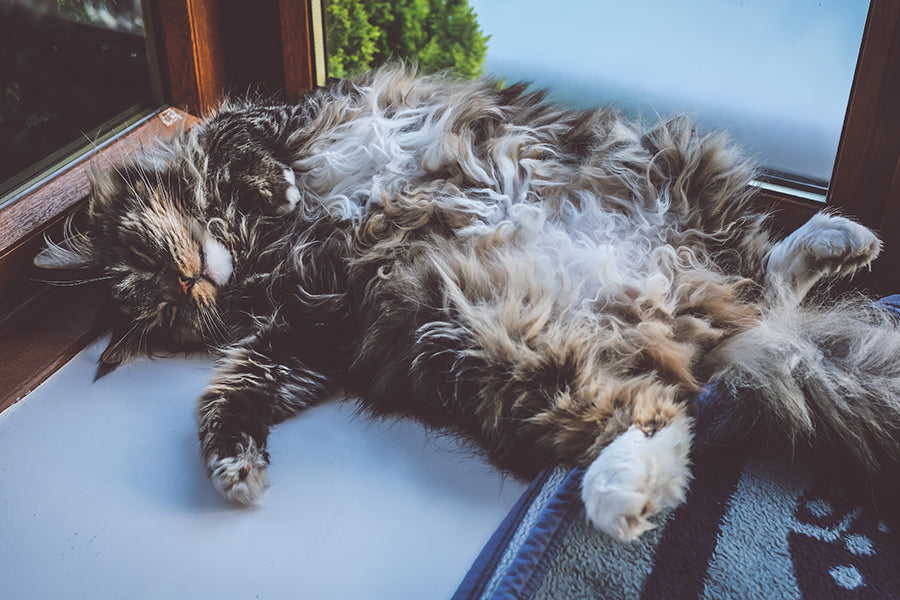If you’ve got a four-legged family member, then you know that they have a way of filling our lives with unconditional love. You probably also know they have a tendency to fill our lives with fur, too. Unless you have a hairless or non-shedding breed of cat or dog, shedding is something we pet parents have all struggled to manage, especially in the warmer months when that excess coat ends up on every inch of our homes and persons. Some shedding is unavoidable as a new fur is always growing. However, with the right information and tools, shedding doesn’t have to be an overwhelming part of caring for your fur-kids.
Nearly all dog and cat breeds shed as part of a healthy cycle of hair growth, but the amount that they shed can vary quite a bit based on how their skin is cared for. The issue of excessive shedding (like most health issues) is one that should be approached from both the inside and outside for best results. While bathing and brushing are what most of us turn to for shed control, what we feed our fur-kids can have just as big of an impact.

Caring for your fur-kid’s coat from the inside means good nutrition and plenty of healthy fats. For cats and dogs, the health of their digestive tract becomes visible in the health of their skin and coat. While they might seem unrelated, digestive upset or inflammation usually results in inflammation of the skin and excessive shedding. Choosing a dog or cat food that includes plenty of healthy meat protein and avoiding foods that include fillers like corn, wheat or by-products can go a long ways towards skin health and reducing shedding. In addition, healthy omega-3 fatty acid supplements like Salmon oil, krill oil, or Missing Link are a great way to support healthy skin and coat and reduce inflammation.
One of the easiest ways to reduce shedding is choosing the right brush for your dog or cat’s coat type and making sure you use it regularly. A long hair coat will require a slicker or rake brush with long teeth in order to reach the undercoat while a short hair coat does better with a rubber curry-comb or short bristle brush that picks up the small loose hairs and massages the skin. The gold standard for reducing shedding is the patented Furminator tool that is specially designed to reduce shedding by up to 90%. The initial price for a Furminator may be higher than a typical brush, but so is its de-shedding performance. Bathing your dog with a gentle shed-helper shampoo and conditioner can also help them ditch that loose coat, especially if you brush them before and after the bath. However, if you bathe them more often than once every four to six weeks, you can actually dry out your dog’s skin and cause more shedding.
Cats rarely need to be bathed as they do such a good job of cleaning themselves. The flip side of that, of course, is that they are prone to hairballs if they shed excessively. Regular brushing of your cat is essential to their health and should be done daily with an appropriate brush and once a week with a Furminator. If you have a cat that hates to be brushed there are an array of play stations, wall attachments, and play tunnels with brush attachments designed to pick up the loose hair from your cat as they play. Many cats who won’t tolerate having their human brush them will happily groom themselves on these stationary brushes in their own time.
Kahooligan Tip - By tackling the issue of shedding from the inside and out you can significantly reduce the traces that your pet leaves everywhere they go. While some shedding is necessary, a healthy skin and coat sheds less, and is something we all want for our fur-kids and for ourselves so we can have a little less loose fur and a lot more love!

